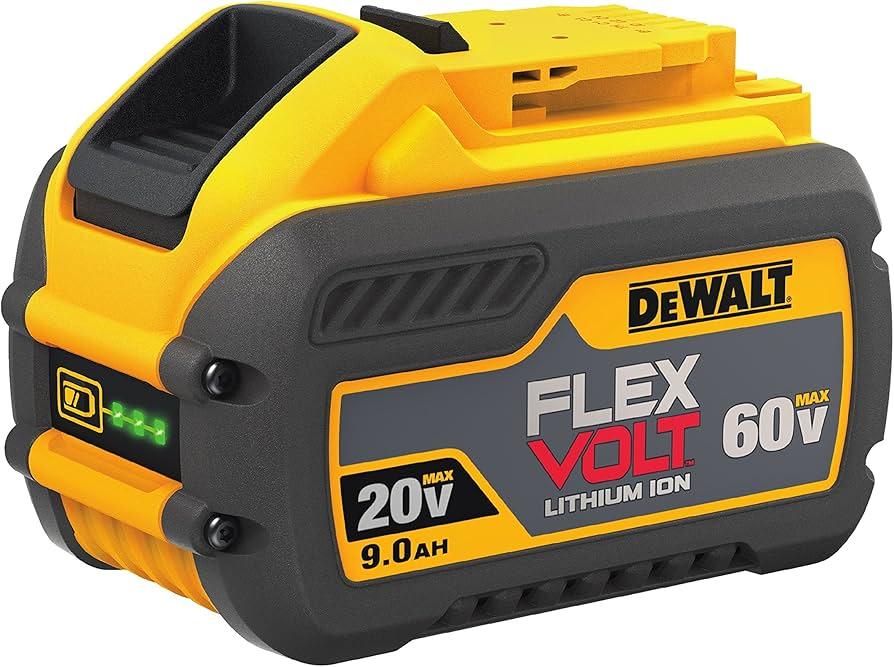In the world of power tools, efficiency and reliability are paramount, and among the contenders for the title of most indispensable tool, few come close to matching the versatility of the dewalt drill. Whether you’re a seasoned professional tackling a complex project or a weekend warrior embarking on a home betterment endeavor, understanding your drill’s battery life is crucial. How long can you truly work on a single charge? This inquiry not only influences productivity but also outputs quality. In this article, we will explore the various factors that can affect the longevity of a DeWalt drill battery, offering insights and tips to help you maximize your operational time on a single charge. Join us as we delve into the mechanics of battery life and discover how to make the most of your dewalt drill—one charge at a time.
Understanding DeWalt Drill Battery Chemistry and Lifespan
Understanding the chemistry behind DeWalt drill batteries is crucial for both professional and DIY users. Most DeWalt tools utilize lithium-ion (Li-ion) battery technology, known for its remarkable energy density and lightweight properties. Lithium-ion batteries provide a longer lifespan compared to customary nickel-cadmium (NiCd) batteries, and they experiance less self-discharge.This means they can hold their charge longer when not in use, ultimately leading to greater efficiency on the job.
To ensure optimal performance and longevity, it’s essential to consider how usage affects battery life. Factors that influence battery lifespan include:
- Charge cycles: Frequent full discharges and recharges can shorten battery life.
- Temperature: Batteries should be stored and used within the recommended temperature range to avoid degradation.
- Maintenance: Keeping battery contacts clean and avoiding exposure to moisture can help maintain capacity.
For a better understanding of longevity, the following table provides a quick comparison of DeWalt battery types and their expected lifespans:
| Battery Type | Typical Lifespan (charges) |
|---|---|
| Lithium-Ion (Li-ion) | 300-500 |
| Nickel-Cadmium (NiCd) | 1,000 |

Maximizing Efficiency: Tips for Extending Battery Life During Use
To optimize the performance of your DeWalt drill battery during use, consider implementing these key practices. Using the right speed setting can help conserve energy, allowing you to work longer without needing a recharge. When tackling different materials, adjust the speed accordingly—lower speeds for harder materials and higher speeds for softer ones. Additionally, taking breaks can prevent the drill from overheating, which can drain the battery more quickly. A cool down period not only extends battery life but also enhances overall productivity.
Another effective way to maximize battery life is to ensure that attachments and accessories are appropriate and well-maintained. Utilizing drill bits that are sharp and suited to your task minimizes resistance and energy consumption. Furthermore, limiting exposure to extreme temperatures can considerably impact battery efficiency. Storing your battery in a moderate habitat and avoiding direct sunlight or frigid conditions can lead to improved longevity. Lastly, keeping an eye on the battery’s charge status and regularly recalibrating it helps sustain optimal performance. By integrating these strategies, you’ll find yourself able to push the limits of your tool’s battery life.

Real-World Testing: Analyzing Battery Performance in Diverse Conditions
In the quest for optimal battery performance, real-world testing offers invaluable insights into how DeWalt drill batteries hold up in a variety of environments and tasks. Various factors can affect battery life, including temperature, workload, and operating conditions. As a notable example, using a drill in extreme heat or cold may lead to significant variations in how long a battery lasts. Moreover, heavy-duty applications, such as drilling into concrete, typically draw more power than lighter tasks, including wood drilling, subsequently impacting overall battery longevity.
to illustrate these differences,testing was conducted across multiple scenarios to quantify performance outcomes.The following table summarizes battery life during different tasks under diverse conditions:
| Condition | Task Type | Battery Life (Hours) |
|---|---|---|
| Standard Room Temp | Wood Drilling | 5 |
| Extreme Cold | Concrete Drilling | 2 |
| Extreme Heat | Metal Drilling | 3 |
| High Humidity | Softwood Drilling | 4 |
By assessing battery performance across these varied scenarios, users can gain a clearer understanding of what to expect from their DeWalt drill batteries in real-world applications. It is crucial for contractors and DIY enthusiasts alike to be aware of these factors to optimize their workflows, ensuring they can effectively plan their projects around the capabilities of their tools.

choosing the Right DeWalt Battery for Your Project Needs
When it comes to ensuring maximum efficiency and performance in your projects, selecting the appropriate DeWalt battery is crucial. With a range of options available,it’s vital to consider factors such as voltage,amp hours,and battery type. For instance, 20V MAX batteries are popular for their balance of power and portability, enabling users to tackle a variety of jobs without the need for frequent recharging. On the other hand, 60V MAX batteries offer significantly higher power output, making them ideal for heavy-duty applications. Always assess your specific project demands to avoid underperforming due to an inadequate power source.
Additionally, think about the battery life and how it correlates with your operational needs. NiCad, Li-Ion, and newer FlexVolt batteries provide different longevity and recharge times. The most effective choice can be summarized in a few key points:
- NiCad: Cost-effective but less efficient; better for occasional users.
- Li-Ion: Lightweight and longer-lasting; perfect for regular use.
- FlexVolt: Delivers versatile power; compatible with both 20V and 60V tools.
| Battery Type | Voltage | Amp Hours | Typical Use Case |
|---|---|---|---|
| NiCad | 18V | 1.5 – 2.0 Ah | occasional DIY |
| Li-ion | 20V | 2.0 – 6.0 Ah | Regular Home Improvement |
| FlexVolt | 60V / 120V | 3.0 – 12.0 Ah | Heavy-duty Construction |
Wrapping Up
understanding the battery life of your DeWalt drill is crucial for maximizing productivity on the job and ensuring a seamless workflow. By factoring in variables such as battery type, drilling conditions, and the specific tasks at hand, users can make informed decisions about the right tools for their projects. As you embark on your next venture, consider the power of your equipment not just as a one-time resource, but as a vital partner in your craft. Whether you’re a seasoned professional or a weekend warrior, knowing what to expect from your DeWalt drill’s battery life will empower you to work smarter, avoid interruptions, and achieve results that truly stand the test of time. so, gear up, charge those batteries, and let your creativity and determination drive you forward—your next masterpiece awaits!



